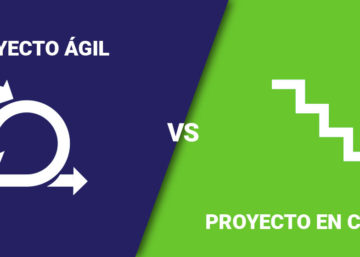The story of our lives…. Those of us who are a little older remember how we started managing projects in the 1990s following the methodologies created based on the guidelines and standards outlined by www.pmi.org or PRINCE2 from Axelos.
This way of managing predictive projects (scope, cost, and timelines known from the beginning) with sequential phases in a waterfall model was losing followers with the onset of the 21st century as the concept of adaptive agile projects (where scope changes during different sprints) began to gain ground, especially in product/app or internet companies where time-to-market for basic versions was crucial to quickly enter the market (MVP) and evolve thereafter. There are different methodologies that help achieve these objectives, with the main ones being Scrum and DevOps.
In the last two or three years, there has been a certain maturity in the trend of doing everything agile, and clients are starting to realise that, except for a few cases where clients are completely waterfall (all their projects and departments) or completely agile, most clients need to manage projects in a hybrid manner. That is, a single client may have both waterfall projects and agile projects.
On the other hand, it is important to note that fully agile clients have encountered the need to find mechanisms that allow them to monitor and coordinate all their agile teams/ projects globally as their numbers have increased. This is where initiatives like Scrum@Scale, SAFe, Agile PMO emerge…
It can also be observed that there is a market trend where major manufacturers of Waterfall project management tools, such as Microsoft and Clarity, are beginning to
venture into the hybrid world through their new products or by acquiring companies with agile products (integrations of Project Online with Azure DevOps, Rally acquired by Clarity, Jira buying Trello, etc.).
In parallel to all this, large corporations with a hybrid environment have realised the need for their Project Management Offices (PMOs) to have a hybrid view in order to oversee all projects across all their programs.
This has led Waterfall leaders, such as PMI, to start adapting their reference publications and bodies of knowledge to hybrid environments or, as Gartner initially referred to them, bimodal environments where corporate systems tend to have Waterfall projects while new systems lean more towards agile projects.
Finally, it is worth mentioning that the European Commission published in 2017 the free version of its internal project methodology that it had been using since 2007, called Open PM². The methodological concepts are similar to PMI, PRINCE2, or IPMA but are open- source, much simpler, more concrete, and practical (Guide, Templates, Wiki, and Community). It has been developed with a much more pragmatic approach and also gradually embraces the reality of agile projects. Last month (March 2021), the program management extension was released.
Our Clients
At Kiteris, we have different types of clients with varying project management needs.
Some have a very high level of maturity in Waterfall project management, using PMI concepts and tools like Project Online or Clarity. Some of them are starting to work in a hybrid environment.
Other clients have extensive experience in agile projects using Scrum.
However, we encounter a type of client that tends to be small or medium-sized enterprises (SMEs) that have grown around an innovative idea and find themselves needing to start managing their projects more professionally. They lack maturity in project management, and this often leads to economic losses or dissatisfaction among their customers. Almost all of these projects are Waterfall with sporadic needs for agility.
For these SMEs, the world of PMI or PRINCE2 is too complex. They often ask us for support to help them draft Good Practices in Project Management documents. To do this, we usually rely on PMI concepts and our years of experience adapting this body of knowledge to various clients of different sizes and circumstances.
We also provide them with a set of document templates that allow them to easily and quickly apply the good practices we have drafted for them.
Open PM²
Although PM² can be used entirely appropriately for large clients, at Kiteris we have realised that Open PM² can also be ideal for our SME clients, whom we have already been advising with good project management practices.
The solid theoretical foundation of this methodology and its practical approach make it suitable for adaptation and use in this type of client, including those with agile projects.
This is why at Kiteris we are committed to its use and extension, in combination with our experience and projects in PMI and Scrum.
Recently, we have been admitted to the PM² Alliance and are already beginning to advance in the knowledge, use, and dissemination of this methodology.
















